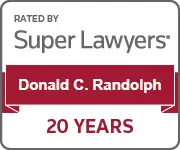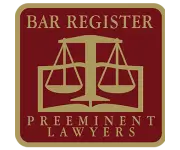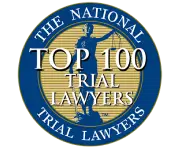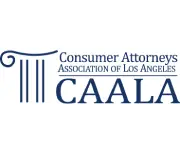Determining fault in a car accident can be a complex process, and it often depends on the specific details of the accident and the applicable laws. It’s essential to gather as much evidence as possible, cooperate with law enforcement, and consider legal advice from our Santa Monica car accident attorney from Randolph & Associates to protect your rights and seek fair compensation.
Police Investigation Helps Establish Liability
Police officers arrive at the accident scene and assess the situation. They observe vehicle positions, damage, and any debris on the road. They may take photographs and measurements to document the accident scene. Officers speak with the drivers, passengers, and witnesses to the accident. They gather statements from each party involved in the accident to understand their perspective on what happened. Witness statements are essential in providing an objective account of the accident. Police interview any available witnesses and record their statements.
Police officers assess whether any traffic laws or regulations were violated. For example, they check if a driver ran a red light, failed to yield, or was speeding. Violations of traffic laws can be a strong indicator of fault. The police consider the road and weather conditions during the accident. Slippery roads, poor visibility, or other environmental factors may influence fault. Police collect and document physical evidence, such as skid marks, tire tracks, and vehicle damage. This evidence can help establish the sequence of events and the actions of the drivers involved.
Based on their investigation, the police created an official accident report. This report includes a description of the accident, diagrams, statements from involved parties, witnesses, and any citations issued. In complex cases or cases involving serious injuries or fatalities, the police may request expert analysis, such as accident reconstruction specialists. Experts use scientific principles to recreate the accident and determine factors like speed, braking, and impact points. If available, officers may review traffic camera footage, surveillance videos from nearby businesses, or dashcam footage from involved vehicles. These recordings can provide additional evidence.
Insurance Companies’ Role is Significant in Establish Liability
Insurance companies play a significant role in determining who is at fault after a car accident, as this determination affects the allocation of liability and the payment of claims. After receiving notice of the accident, the insurance company initiates a claims investigation. They may assign an adjuster to handle the case. Insurance companies review the official police report prepared by law enforcement officers who responded to the accident. The report often contains key details, statements from involved parties, and the officer’s assessment of fault.
Insurance adjusters collect statements from their policyholders (the insured) involved in the accident, as well as from other parties, including witnesses. These statements provide information on each party’s perspective and may help determine fault. Insurance companies may also gather statements from witnesses to the accident who can provide an objective account of what they saw. Insurance adjusters may review medical records of injured parties to assess the extent of injuries and treatment received. They also consider any citations or charges issued by the police to assess fault.
Visual evidence, such as photographs or videos of the accident scene, can provide additional insights and context for the insurance company’s determination of fault. In complex cases, insurance companies may employ accident reconstruction specialists or other experts to analyze the evidence and provide an expert opinion on fault. Insurance companies assess the terms and conditions of the insurance policies involved, including coverage limits and any policyholder responsibilities. The adjuster will determine if the insured’s policy covers the accident and if any exclusions apply.
Insurance adjusters evaluate whether any traffic laws or regulations were violated, which can be a strong indicator of fault. If multiple insurance companies are involved (e.g., when there are multiple vehicles or parties in the accident), they may negotiate and apportion fault based on their assessments. In cases where both parties share some degree of fault, insurance companies may apportion fault, meaning they assign percentages of liability to each party based on their assessment of the evidence. Once fault is determined, the insurance companies may negotiate a settlement to compensate the injured party. The amount of compensation is typically based on the degree of fault and the policy limits of the insured parties.
Determine Fault in a Car Accident by the Court
When a car accident case goes to court, the determination of fault is made by a judge or jury. The court’s decision is legally binding and can significantly impact the case outcome. The process begins when the injured party (plaintiff) files a complaint, outlining their claims against the other party (defendant) and alleging that the defendant was at fault for the accident. Both parties engage in the discovery process, exchanging evidence and information about the accident. This can include accident reports, witness statements, photographs, medical records, and other relevant documentation.
Witnesses who can provide firsthand accounts of the accident are typically called to testify. This may include the drivers involved, passengers, and any independent witnesses who were at the scene. Expert witnesses, such as accident reconstruction specialists or medical experts, may be called to provide professional opinions on fault and the extent of injuries. The official police report, if available, is considered as evidence. It contains the responding officer’s assessment of the accident, statements from involved parties, and any citations issued. Courts assess whether any traffic laws or regulations were violated. Violations can be a strong indicator of fault.
The court determines whether the defendant’s actions were the cause of the accident and injuries. In other words, did the defendant’s actions lead to the plaintiff’s injuries in a foreseeable manner? The court considers evidence of negligence on the defendant’s part, such as reckless driving, speeding, running a red light, or failing to yield right of way. In states that follow comparative negligence, the court may apportion fault between the parties based on their respective degrees of negligence. This means both parties may share some responsibility.
Sometimes, a judge may decide fault based on the evidence and legal arguments presented. In other cases, the matter is presented to a jury for deliberation. The judge provides legal instructions to the jury, and they decide based on the facts presented during the trial. The court issues a verdict, which states who is at fault and any resulting legal consequences, such as liability for damages. If either party is dissatisfied with the court’s decision, they may file an appeal to a higher court. The appellate court will review the case for legal errors, but it does not re-evaluate the facts or make a new determination of fault.
Get Help of Our Car Accident Attorneys to Determine Fault
If you’ve been injured in a car accident and are seeking legal assistance, it’s essential to contact a reputable car accident attorney. Our car accident lawyer in Santa Monica at Randolph & Associates can help you through every step of the legal process, ensure your rights are protected, and work to secure fair compensation for your injuries and losses. Call today at 310-395-7900 to get a free consultation with our attorneys.







